Frosts have come to Ukraine, which means that iPhone owners have started playing the traditional game “don’t let your smartphone freeze”, because it will turn off. Mobile phones of other brands easily survive frosts and do not turn off. But among dozens of smartphone manufacturers, it is Apple gadgets that have gained a reputation for being afraid of the cold. Analysis of the iPhone design makes it easy to answer the question of why this happens.
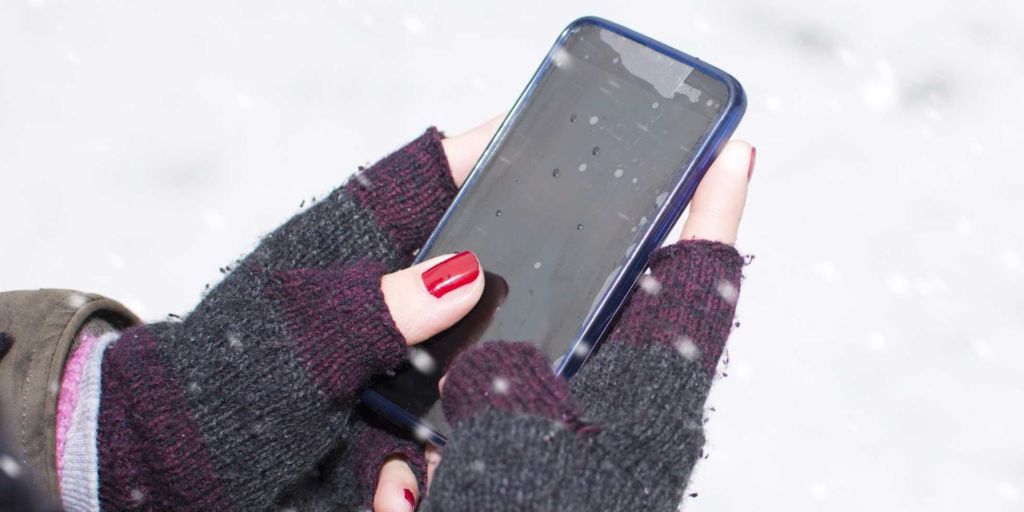
1. Batteries don’t like frost
Batteries are chemical sources of energy, and the rate of chemical reactions depends on the temperature of the substances involved in it. Changing the temperature for every 10 degrees approximately changes the rate of chemical reaction by half.
Lithium-ion batteries are no exception, and they also give off less capacity when the temperature drops. A noticeable decrease in capacity occurs at temperatures below zero degrees Celsius.
Here is a graph showing the decrease in the available capacity of a li-ion battery as the temperature decreases. At a temperature of -10 degrees Celsius, the capacity drops by almost 30%, at a temperature of -20 degrees – say goodbye to 50% of the capacity.
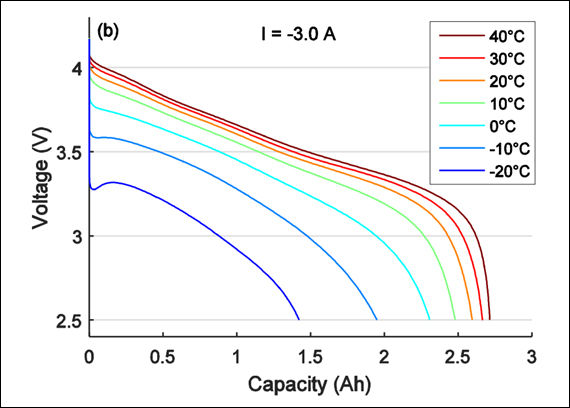
Don’t worry, as soon as the battery warms up, its capacity will return. But in the cold, it will fall again.
2. Batteries degrade over time
The lithium-ion battery degrades with age, even if it is on a shelf. Use only accelerates this degradation. The rate of this degradation depends on the temperature at which the battery was operating. The rate of degradation is also affected by its discharge current – remember this.
The test schedule shows a number of li-ion batteries with a capacity of 1500 mAh:
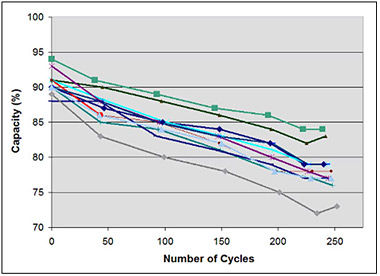
lithium1x was discharged with a current of 1500 Ma or 1.5 A – remember the order of digits.
3. Batteries like slow discharge
The capacity of a battery directly depends on how much current it is discharged relative to its rated capacity. The graph shows the dependence of the battery life on the current with which it is discharged and charged. The rated capacity of the battery is indicated by the letter C.
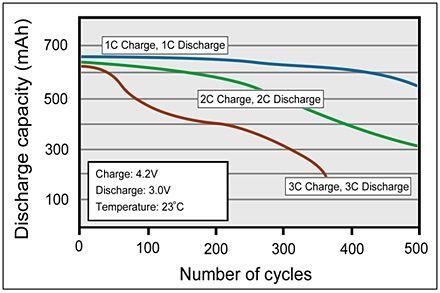
battery-discharge-life-cycle for example, a 700 mAh battery will slowly reduce its capacity if it is discharged with a current of 700 ma (0.7 amps). When discharged with a current of 1400 ma (1.4 A), the degradation rate will significantly increase. If it is discharged with three times the highest current (2100 ma, 2.1 A), it will last 30% fewer cycles.
4. A fast processor requires power
From the point of view of physics, the processor is an electric heater – almost all the energy consumed by it is converted into heat. Therefore, the more productive the processor, the more it consumes (under all other conditions: architecture, technological process, additional hardware codecs and coprocessors, etc.).
Modern smartphone processors easily consume several amps of current at maximum load. Their peak power consumption can be estimated by the TDP parameter, which shows how much heat in Watts the chip can generate. By converting TDP Watts to current, you can get numbers of about 2-4 amps – remember this figure.
The TDP of the Apple A14 Bionic (available in the iPhone 12) is 6 Watts. Its direct competitor Snapdragon 865 has a heat package of 5 W, a similar heat package was the flagship chip of 2019 Snapdragon 855. the heat package of the top-end in 2021 Qualcomm Snapdragon 888 is 10 W. The current top-end Samsung Exynos 2100 has the same heat package.
5. And now, as they say, watch the hands
Apple processors have a high, but not the biggest, appetite among mobile chips. However, Apple smartphones have the smallest batteries among flagships, and in the iPhone 12 generation, the capacity even decreased.
The Apple iPhone 12 has a battery capacity of 2,815 mAh – 10% less than the iPhone 11. the largest iPhone 12 Pro Max has a battery capacity of 3,678 mAh.
The Xiaomi Mi 10 smartphone with a Snapdragon 865 processor has a 4780 mAh battery. Oppo Find X2 with the same chip has a battery capacity of 4260 mAh.
Smartphones are equipped with batteries for which the maximum discharge current should be close to one value of its capacity. That is, for a 1500 mAh battery, the discharge current should not exceed 1.5 amps. There are so-called high-current batteries that can withstand current tens of times higher than the capacity value, but they have a smaller capacity and are therefore not used in smartphones.
Therefore, a TDP of 6 W means a peak current consumption of about 2 amps by the processor. For a 4,780 mAh battery, this is significantly less noticeable than for a 2,815 mAh battery. The latter will work close to its peak capabilities. That is, in Apple smartphones, the battery suffers from high current discharge and degrades faster.
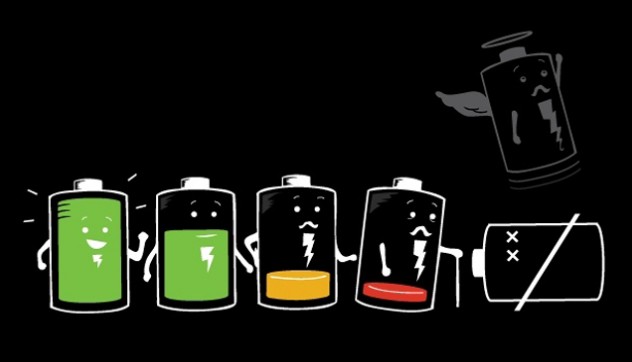
6. How the iPhone shuts down in the cold: frame by frame
The initial battery capacity of the iPhone does not cover much of the power consumption requirements of Apple processors. Over time, the battery degrades and loses its capacity. Not much, only 5-10%, which is invisible in everyday use in the warm season.
And here comes winter and frosts, the owner of the iPhone takes out a mobile phone from his pocket. The battery begins to cool down quickly, losing 30-50% of its capacity.
Percentages of operational and Frost degradation are added, and the actual battery capacity before switching off can be 30-50% of the new one.
However, the Apple processor does not know anything about this and works according to the standard mode – to complete the current task as quickly as possible, then switch to power saving mode and increase the autonomy of the device.
The processor starts consuming its 2 amps of current, but only 30-50% of the energy is left in the battery. It cannot produce the required current, which manifests itself as a voltage drop. The voltage drops below 3.6 volts, and the iPhone’s electronics shut down due to a power shortage.
But it is enough to warm up the iPhone battery, it returns the capacity lost in the cold and can provide the necessary current. The voltage is kept above 3.6 volts and the heated iPhone works as if nothing happened.
Therefore, a tip: If you see the owner of the iPhone in the cold – take him to a warm room ![]()


